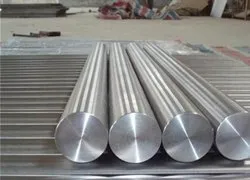Introduction
The artistry of working with metals demands not only skill but also a profound understanding of each material’s intricacies. 410 stainless steel, celebrated for its strength and versatility, beckons craftsmen and engineers to harness its potential. In this comprehensive article, we embark on a journey to unravel the necessary precautions and strategies required when working with 410 stainless steel, ensuring safety, quality, and optimal outcomes in a world where precision and expertise are paramount.
1. The Alchemy of Safety: Precautions as the Foundation
 Working with 410 stainless steel is a dance that demands precision, skill, and above all, safety. Precautions form the cornerstone of this journey, ensuring that every step is taken with care and consideration.
Working with 410 stainless steel is a dance that demands precision, skill, and above all, safety. Precautions form the cornerstone of this journey, ensuring that every step is taken with care and consideration.
2. Unmasking 410 Stainless Steel: A Quick Recap
410 stainless steel boasts attributes like strength, hardness, and moderate corrosion resistance. Understanding its composition and properties is the first step towards informed craftsmanship.
3. Gear Up: Personal Protective Equipment (PPE)
Safety attire is the armor that safeguards against potential hazards:
- Eye Protection: Safety goggles shield against sparks, debris, and UV radiation.
- Gloves: Heat-resistant gloves protect hands from burns during welding and handling.
- Respiratory Protection: Respirators guard against fumes and particulate matter.
4. Precision Begins: Tools and Equipment
Using the right tools enhances precision and safety:
- Cutting Tools: High-quality cutting tools ensure clean and accurate cuts.
- Welding Equipment: Properly maintained welding equipment ensures reliable joints.
5. Taming the Flame: Welding and Heat Treatment
Welding and heat treatment require careful execution:
- Welding Precautions: Avoiding overheating and controlling distortion during welding.
- Heat Treatment Control: Precise control of heat treatment parameters to achieve desired properties.
6. Controlling the Dance: Machining and Fabrication
Machining and fabrication demand precision and expertise:
- Coolant Usage: Using coolants during machining to prevent overheating and maintain tool life.
- Tool Selection: Choosing appropriate tools for different machining operations.
7. Corrosion Vigilance: Cleaning and Surface Preparation
Proper cleaning and surface preparation ensure quality finishes:
- Surface Cleaning: Thorough cleaning before fabrication to prevent contamination.
- Passivation: Passivating stainless steel surfaces to enhance corrosion resistance.
8. Balancing Act: Working with Brittleness
Managing brittleness in 410 stainless steel requires strategic planning:
- Heat Treatment Optimization: Controlled heat treatment to balance hardness and toughness.
- Avoiding Thermal Shock: Preventing rapid temperature changes to reduce the risk of cracking.
9. Safety in Storage and Handling
Proper storage and handling prevent damage and accidents:
- Storage Conditions: Storing 410 stainless steel in a dry and clean environment to prevent corrosion.
- Handling with Care: Using proper lifting equipment for heavy pieces to prevent accidents.
10. Expert Insights: Mastering the Craft
 Experts provide insights into effective precautions:
Experts provide insights into effective precautions:
- Material Knowledge: Understanding 410 stainless steel’s behavior to anticipate challenges.
- Training and Education: Ensuring craftsmen are well-trained in handling and processing the material.
11. The Canvas of Success: Real-World Cases
Real-world examples illustrate the importance of precautions:
- Aerospace Industry: Precise welding and heat treatment for critical components.
- Cutlery Manufacturing: Machining and heat treatment for durable blades.
12. A Symphony of Precautions: Striking the Right Chord
Harmonizing precautions is crucial for flawless outcomes:
- Collaboration: Communicating and collaborating with experts and colleagues for informed decision-making.
- Adaptation: Adapting precautions to specific applications and environments.
13. Frequently Asked Questions (FAQ)
Q1: Why are precautions necessary when working with 410 stainless steel?
A1: Precautions ensure safety, prevent accidents, and result in quality outcomes when working with 410 stainless steel due to its specific properties and challenges.
Q2: What type of eye protection is recommended when working with 410 stainless steel?
A2: Safety goggles with side shields offer adequate eye protection against sparks, debris, and UV radiation.
Q3: How can brittleness during machining be managed?
A3: Managing brittleness involves optimizing heat treatment, selecting appropriate machining parameters, and avoiding thermal shock.
Q4: Is it necessary to passivate 410 stainless steel surfaces after fabrication?
A4: Yes, passivation helps enhance the corrosion resistance of stainless steel surfaces and is recommended after fabrication.
Q5: How can craftsmen stay updated with the latest precautions for working with 410 stainless steel?
A5: Staying informed through training programs, industry publications, and collaboration with experts ensures craftsmen are up-to-date with the latest precautions.
Conclusion
Working with 410 stainless steel is a symphony that requires a skilled conductor. Each precaution, like a musical note, contributes to the harmonious outcome of safety, quality, and precision. From personal protective equipment to mastering the intricacies of welding, machining, and heat treatment, craftsmen wield a symphony of precautions to orchestrate flawless results. As they traverse the journey of crafting excellence with 410 stainless steel, the symphony of precautions becomes a testament to the craftsmanship that transforms raw material into masterpieces.
